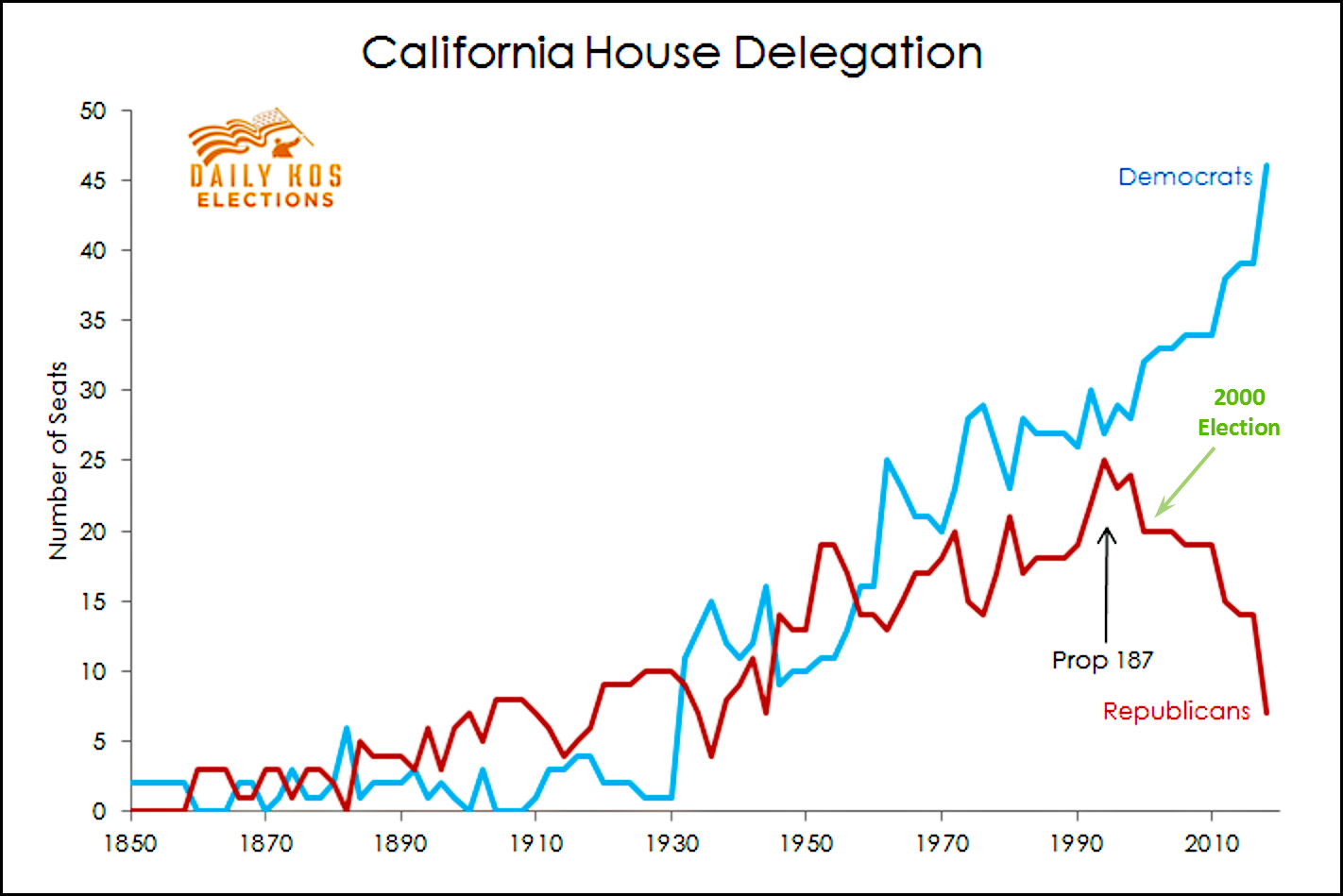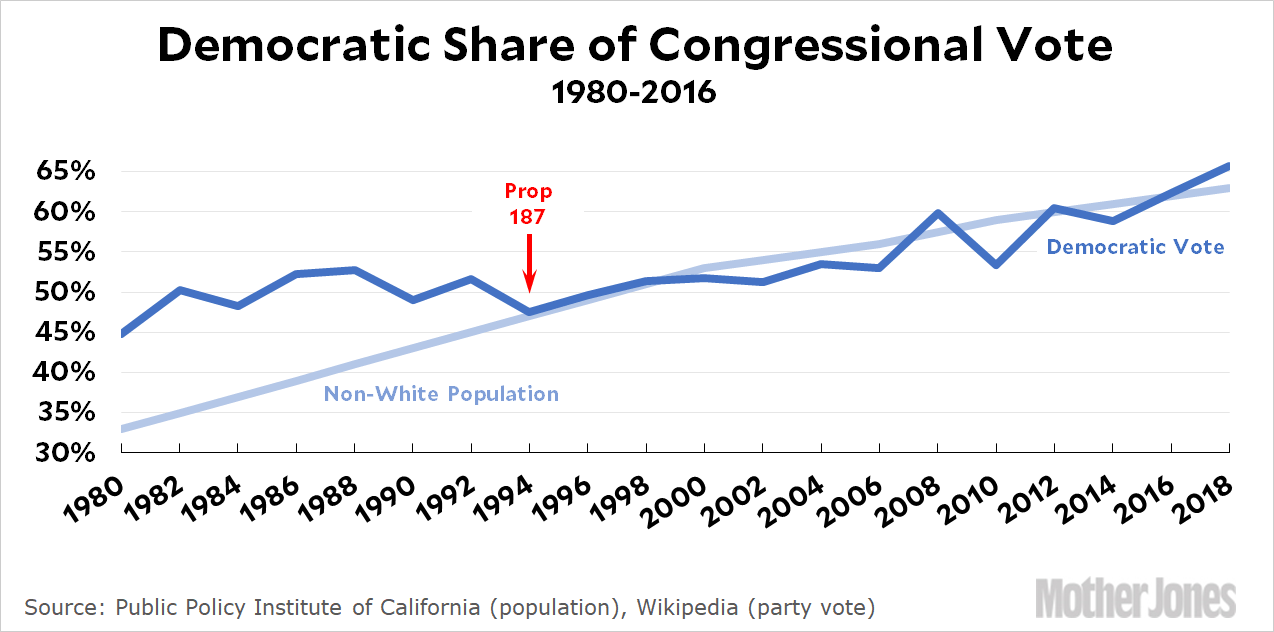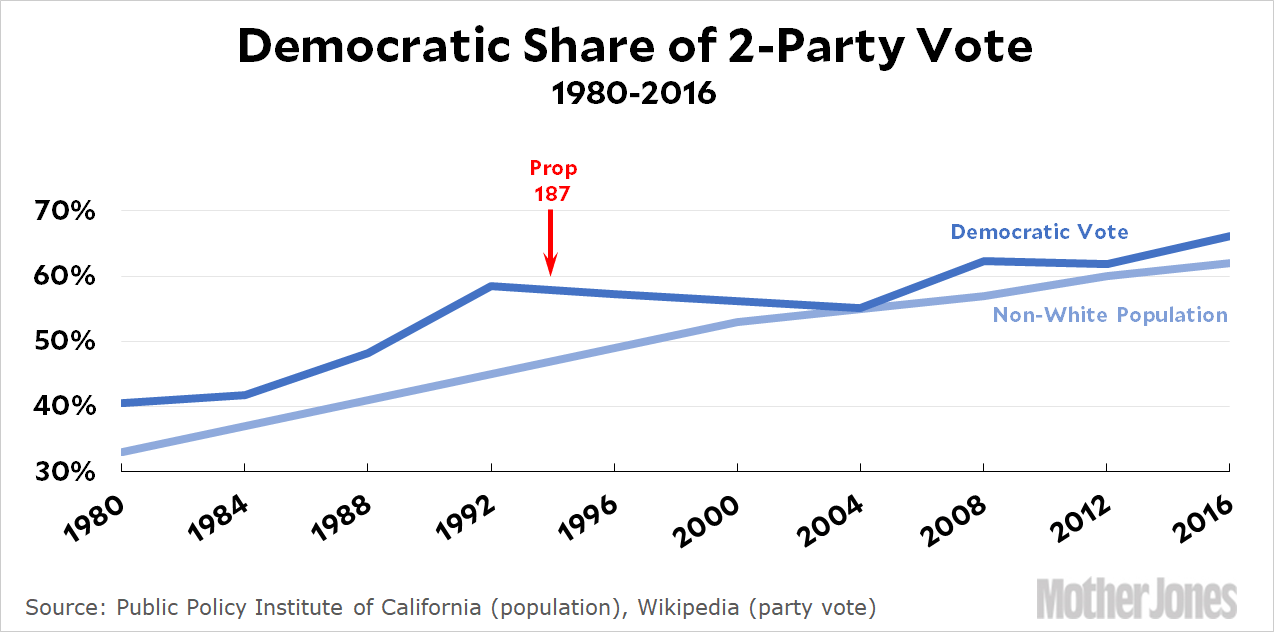I guess it’s time for my biannual Prop 187 mythbusting post.¹ This one is prompted by Daniel Donner over at Daily Kos, who says that California’s infamous Proposition 187, passed in 1994, was responsible for the decline and eventual death of the Republican Party here:
The high point for the California GOP came with the re-election of Pete “I Am Not A Racist” Wilson as governor as he campaigned for the indisputably racist Proposition 187, in 1994, the year of the Angry White Male (oh, hindsight). Prop 187 coincided with a shift in the political preferences of Latinos even more toward Democrats, and an increase in Latino political participation; while causation is difficult to prove, alternate explanations are hard to come by.
But there is an alternative explanation, and it’s really simple. First, though, here is Donner’s chart. I’ve added the arrow in green:

The main thing to notice here is that the black arrow distracts you from looking at the chart properly. In fact, nothing much happened in the two elections following Prop 187. The first big drop for Republicans came in 2000, six years later. So what’s going on? The answer is pretty simple: The non-white share of the population steadily increased starting around 1970 and the Democratic share of the congressional vote increased along with it. Here’s a chart:

As you can see, the Democratic share of the congressional vote increased along with the non-white population from 1980 to 1988, then dipped for a few years, and then closely followed the population trend again from 1994 to the present. Aside from the odd 1990-94 dip, the only explanation you need for this is the growth of the non-white population. More about that here.
It’s likely that Prop 187 helped cement Latino opposition to the Republican Party, and might well be responsible for a few additional points of Democratic vote share. In fact, I have a hard time believing that’s not the case. But you really can’t see it in the numbers. Basically, the more non-whites there are, the bigger the Democratic vote share. And that’s all there is.
POSTSCRIPT: In case you’re interested, you can see pretty much the exact same thing if you look at presidential vote shares:

¹Prop 187 denied public services to undocumented immigrants. It passed in 1994 with the overwhelming support of the Republican Party, but it was eventually struck down by the courts.

















